It wasn’t a planned expense, but we are still running our original 30 year old sails that are still in decent shape but the sun damage has gotten to the point where they are just falling apart.
We received many suggestions and requested quotes from four of them. In the end, we found Precision Sails had the best price and good online reviews as well as one person on our dock that also had good things to say about them.
We had a 30 minute consult with Precision and paid half down for our new sails and were given instructions on how to measure our existing sails and boat for the new sails. We were given a separate form to fill out for each sail plus one for the track.
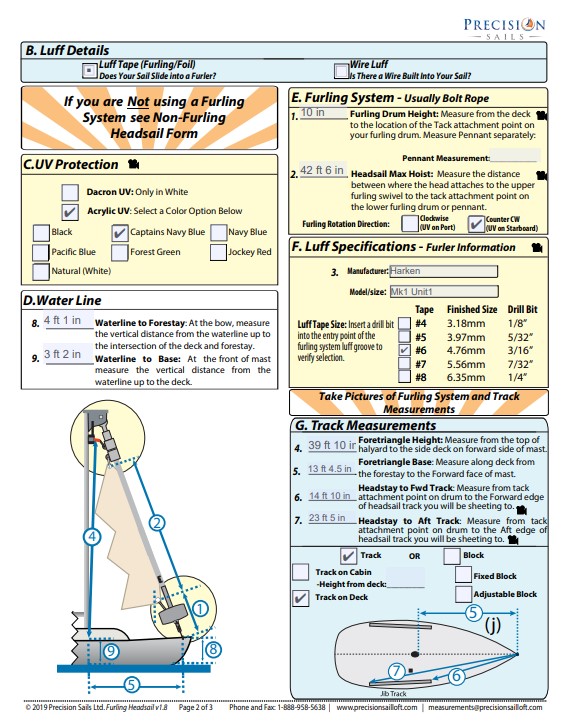
Here is how we measured everything for to complete the Precision Sails measurement forms.
Headsail
Standard Rig Measurements, from CS Yachts.
I. 43 ft J. 13.5 ft
Existing headsail measurements. We took down the sail and laid it down on the ground to measure. Measurements are are straight lines from each corner.
Luff: 41 ft 6 in Leech: 42 ft Foot: 19 ft 20 in
Waterline
Measuring the vertical distance from the bow to the waterline.
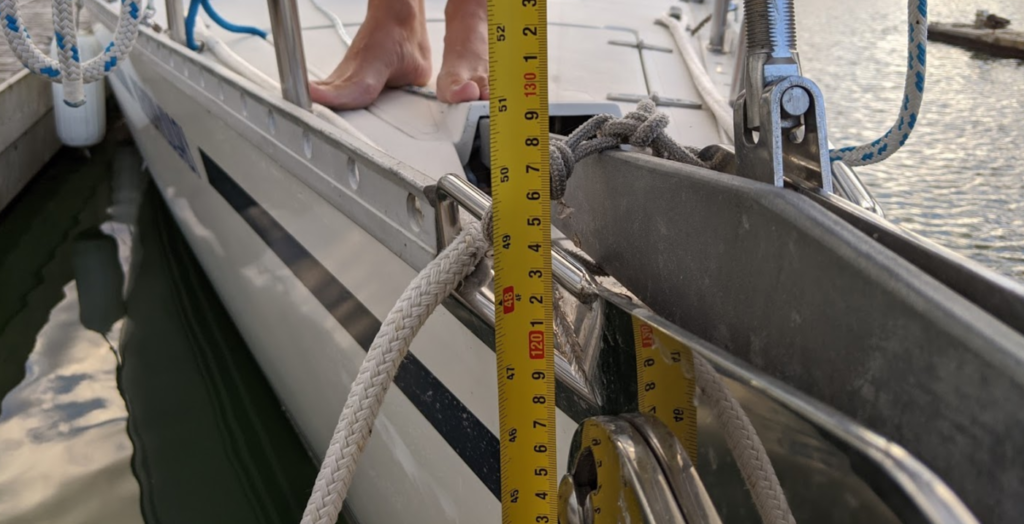
Measuring the vertical distance from the midsection of the boat, in line with the mast to the waterline. We went with deck height, at the base of the toe rail.
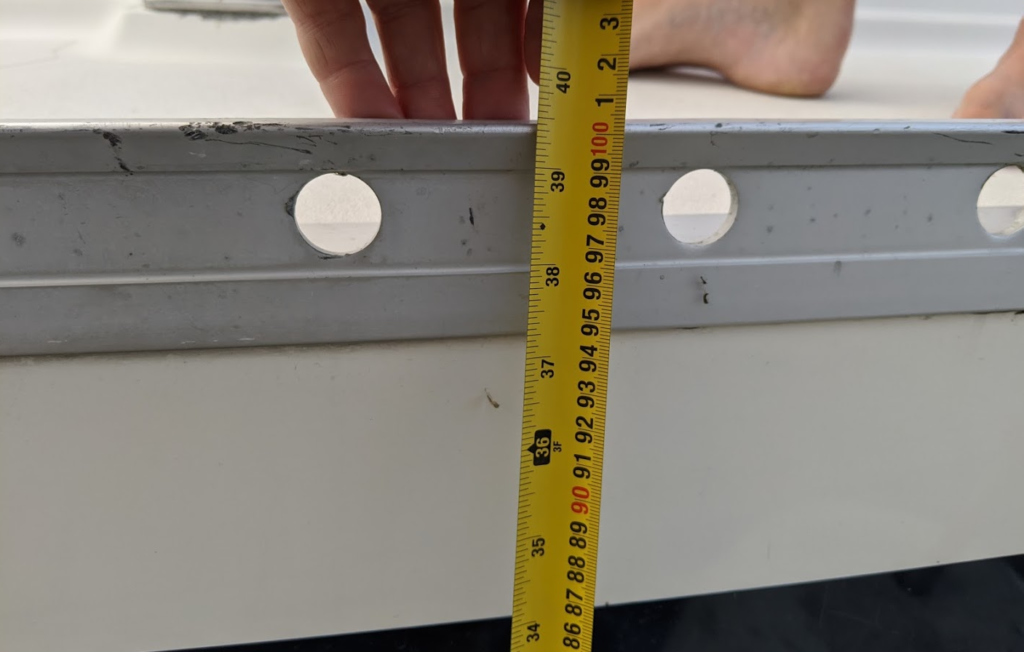
Furling System and Foretriangle
We have the original Harken Mk I Unit 1 furling system. Measuring the furling drum height.
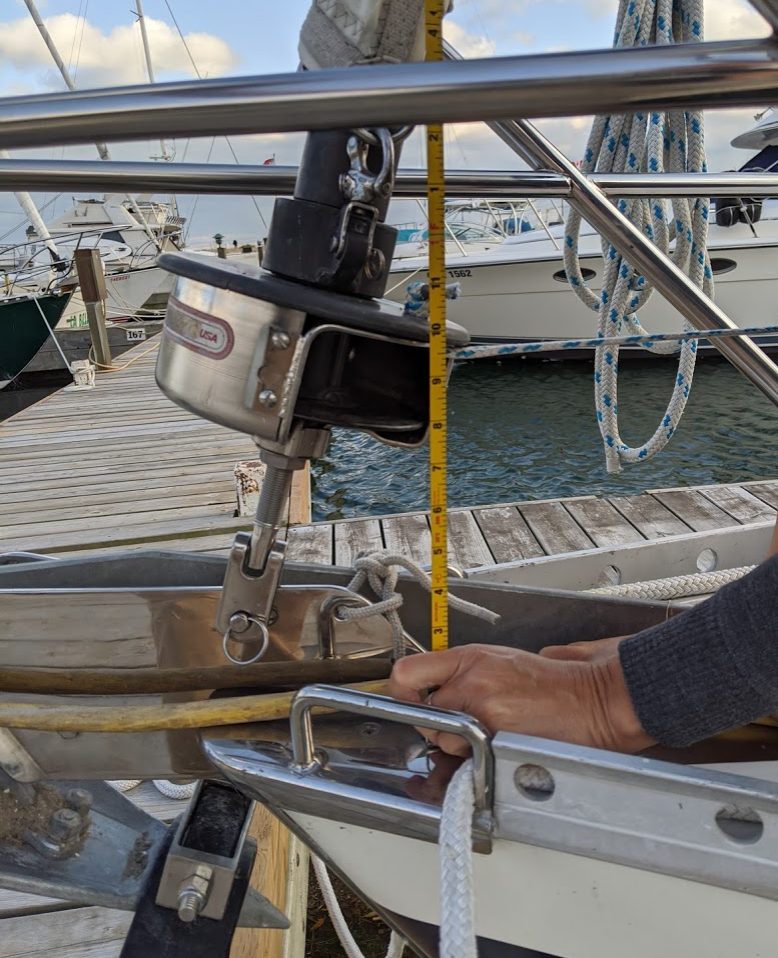
Measuring headsail max hoist. This is best done with the headsail off. You will attach your tape measure and an extra line to ensure you can retrieve your halyard after hoisting. It was too windy to pull the headsail down so we measured with our second halyard. Need to reduce size by the size of the “car?” on the furling system.
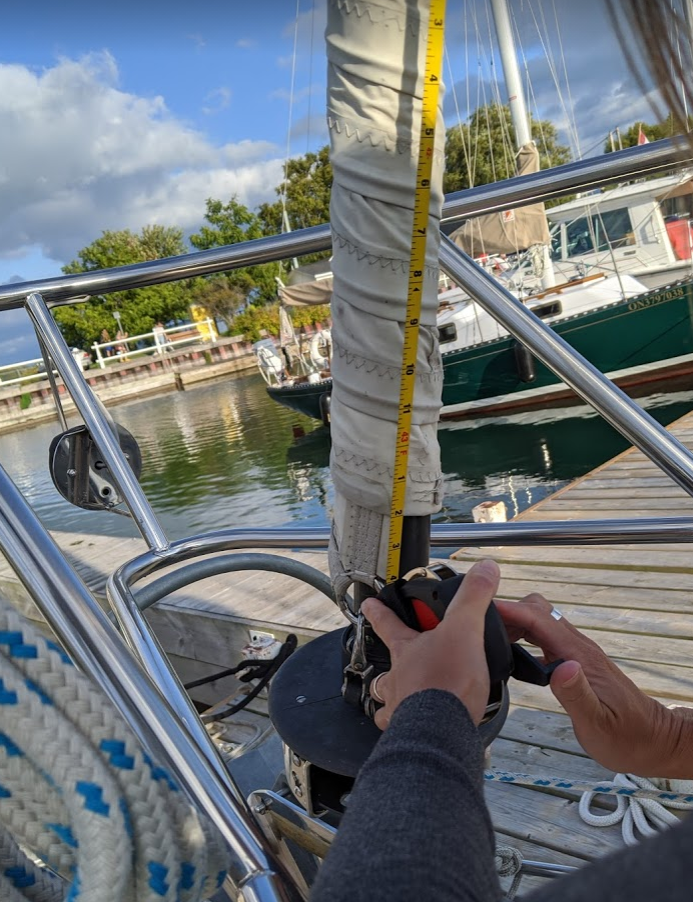
Part of measuring the headsail, need to get the remaining dimensions of the triangle. Before lowering the halyard, walk the measuring tape back to the base of the mast.
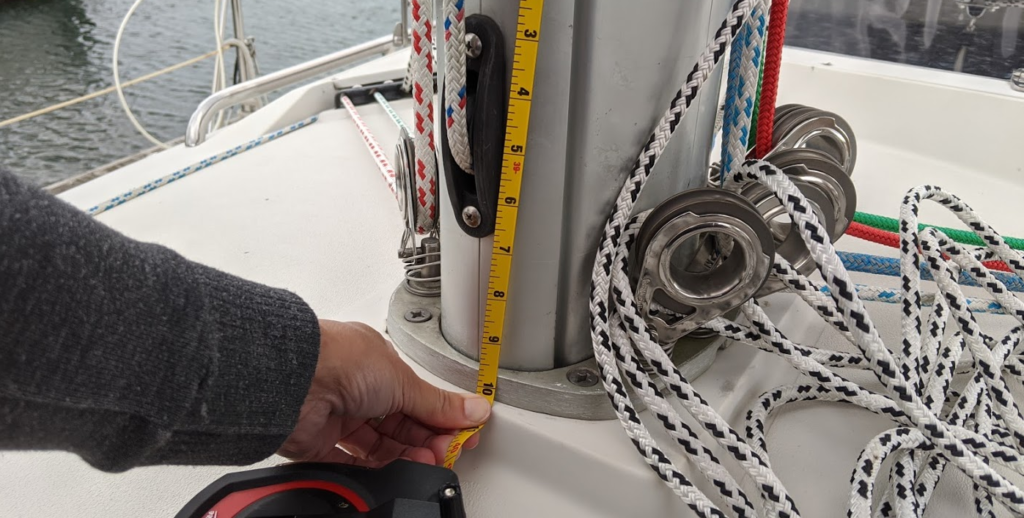
Forestay to mast along deck. Measuring between where the forestay attaches to the deck to the front of the mast.
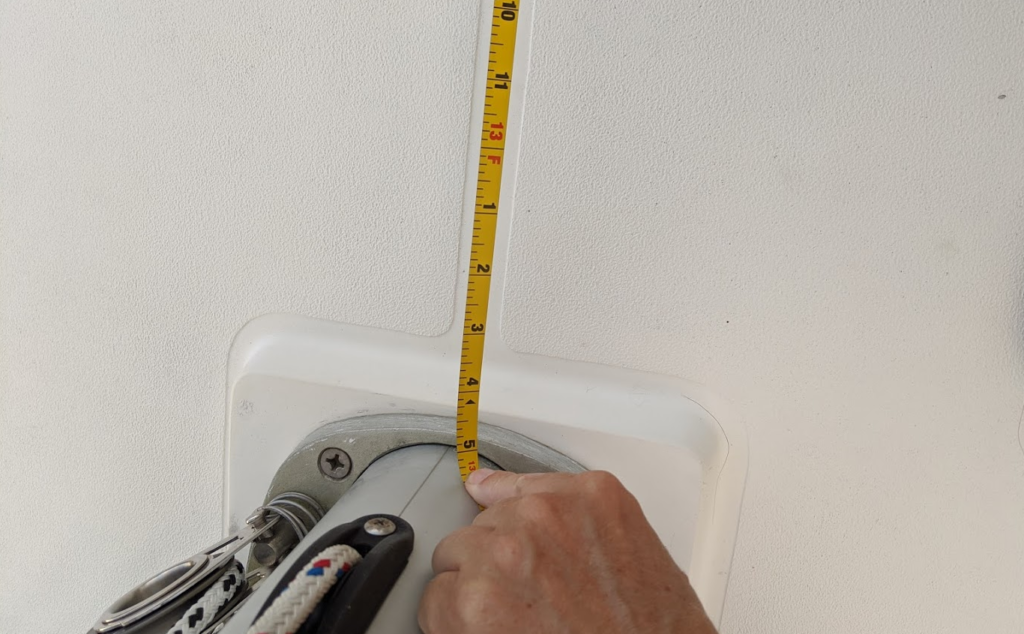
Need to determine the luff tape size for the foresail. There may be some specifications in the Harken owner’s manual but you can also determine by trying to fit various size drill bits into the base of the track.
Track Measurements
We have a lengthy track down each side of the boat with an adjustable Lewmar Car. This is the distance from where the forestay is attached to the deck to the fore edge of the track.
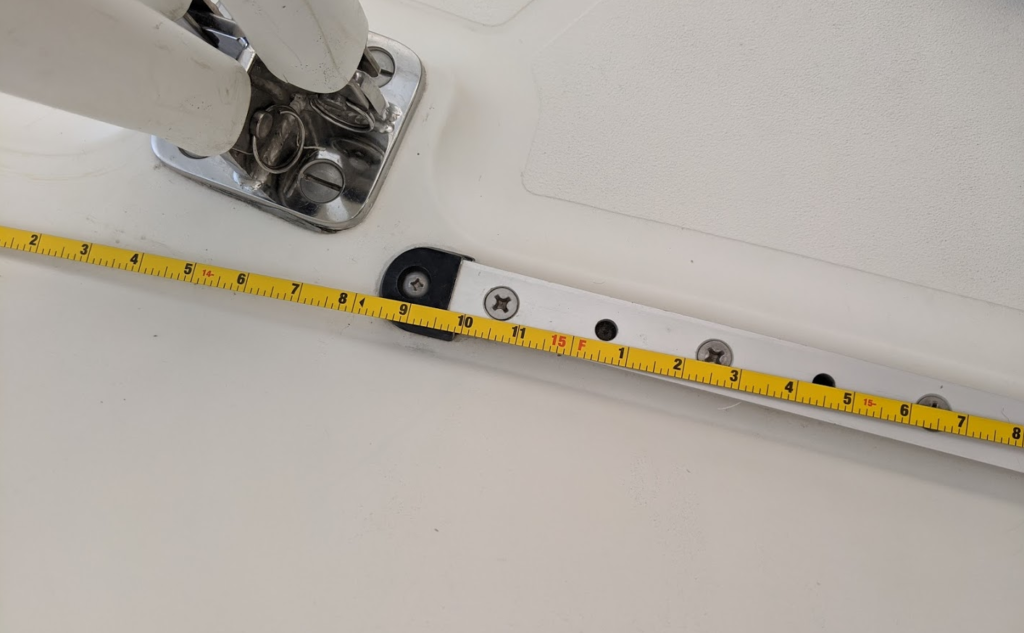
This is the distance to the aft edge of the track.
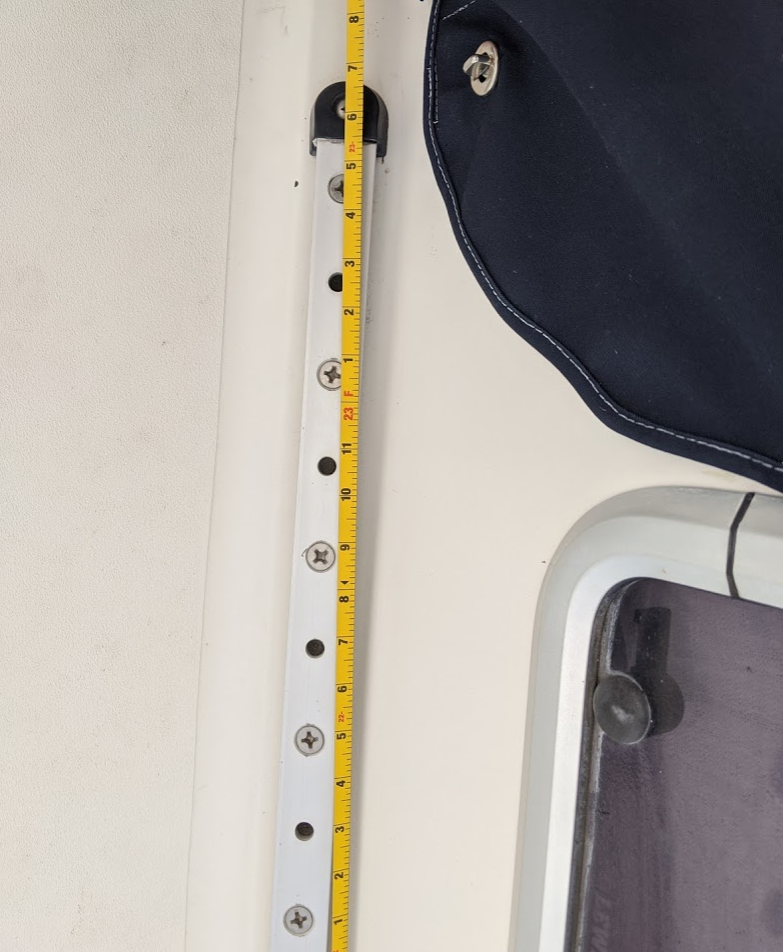
Measurements from the owners manual for our Harken MkI Unit 1 Jib Reefing & Furling System.
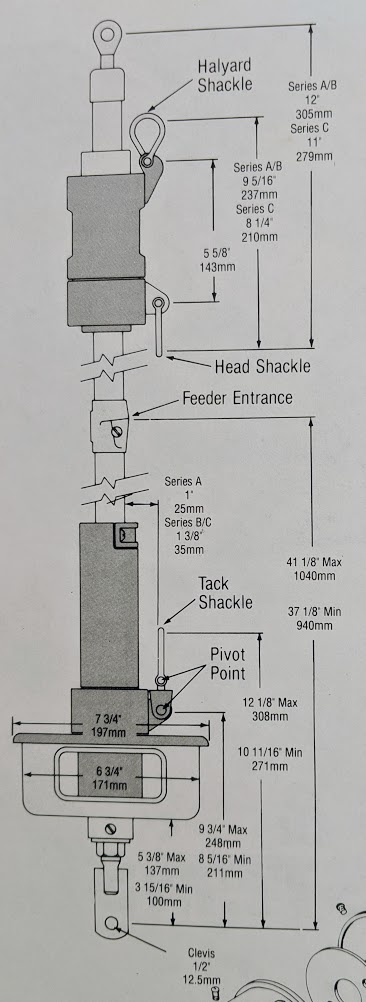
Mainsail Measurements
Standard Rig Measurements, from CS Yachts.
P: 37.4 ft E: 13.0 ft
We measured the mainsail by laying out on the grass and measured directly from corner to corner. There’s a lot of sail outside of this straight edge, but this is what they asked for.
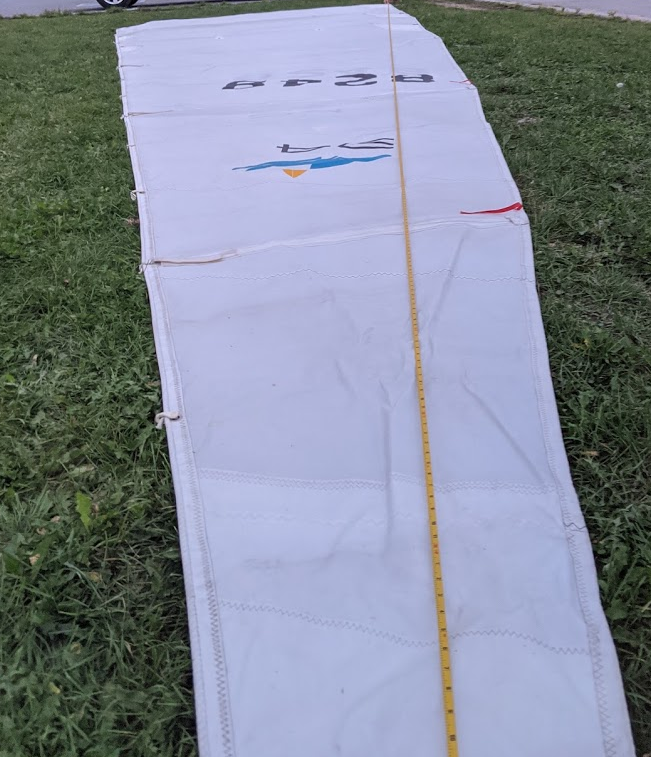
Luff: 36 ft 4.5 in Leech: 39 ft 2.5 in Foot: 12 ft 5.5 in
Rig measurements
Next are the lengths of the mast and the boom. This is done by taking a measuring tape and hoisting it up the main halyard to the top of the mast. Make sure you include a rope to haul it back down!
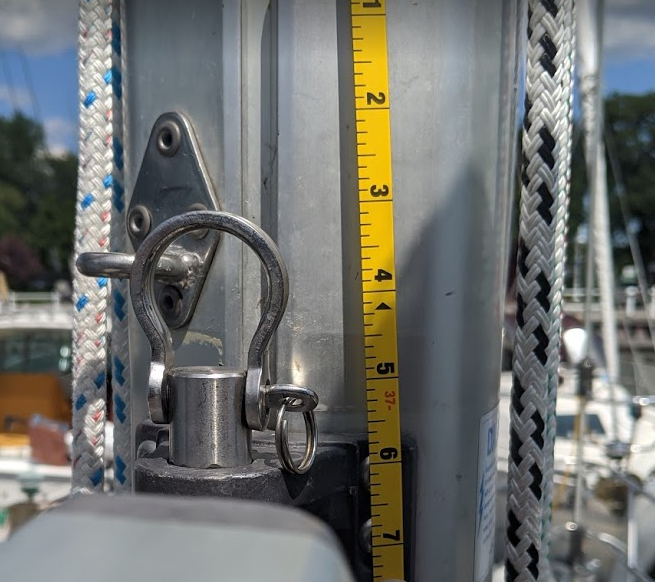
Length of the boom, or “maximum foot length” measuring from the aft face of the mast to the shackle of the outhaul. Our outhaul is just a dyneema line tied onto the clew.
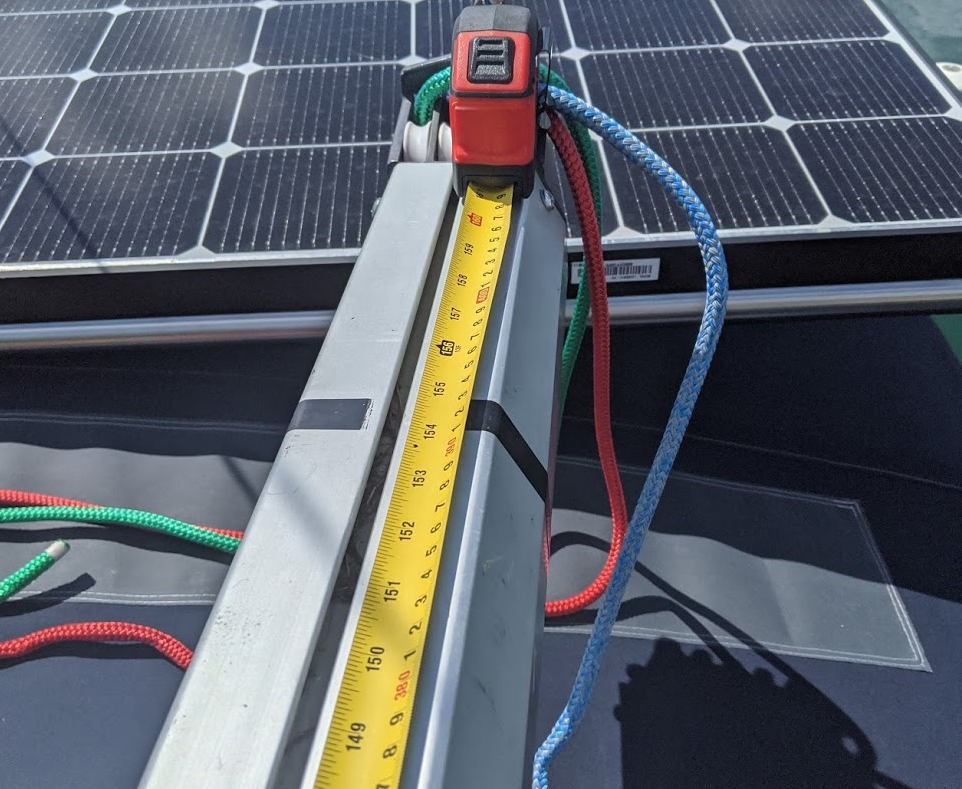
Our current mainsail has a groove that the entire foot of the sail slides into and has a car or a slug at the clue.
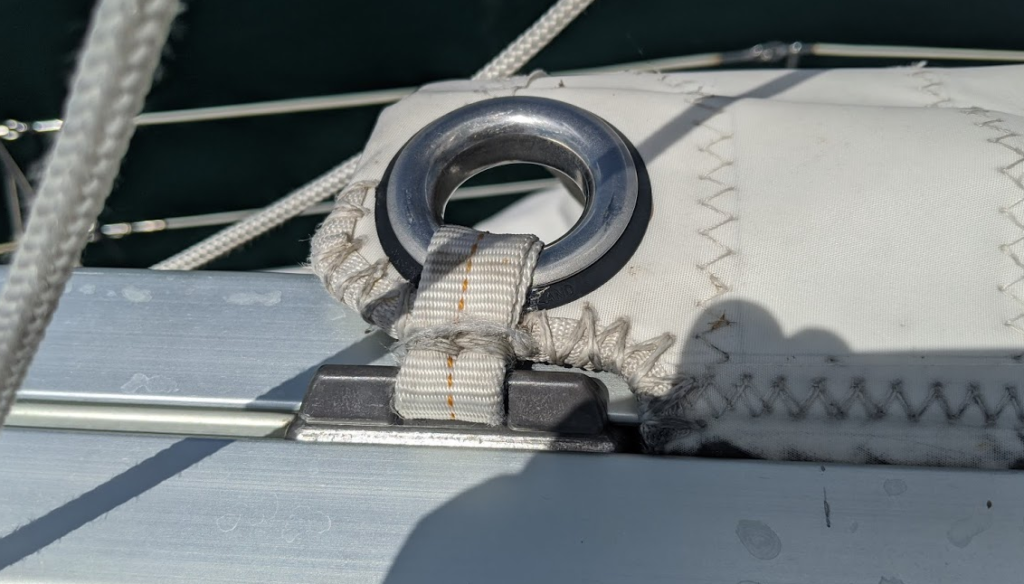
We will be moving away from a fixed foot to a loose foot and will no longer have to feed the foot of the sail into our boom. Also heard this will allow an improved sail shape.
Also need to provide the distance to the backstay to help figure out the maximum size of sail that can squeeze in there without interfering or hitting the backstay.
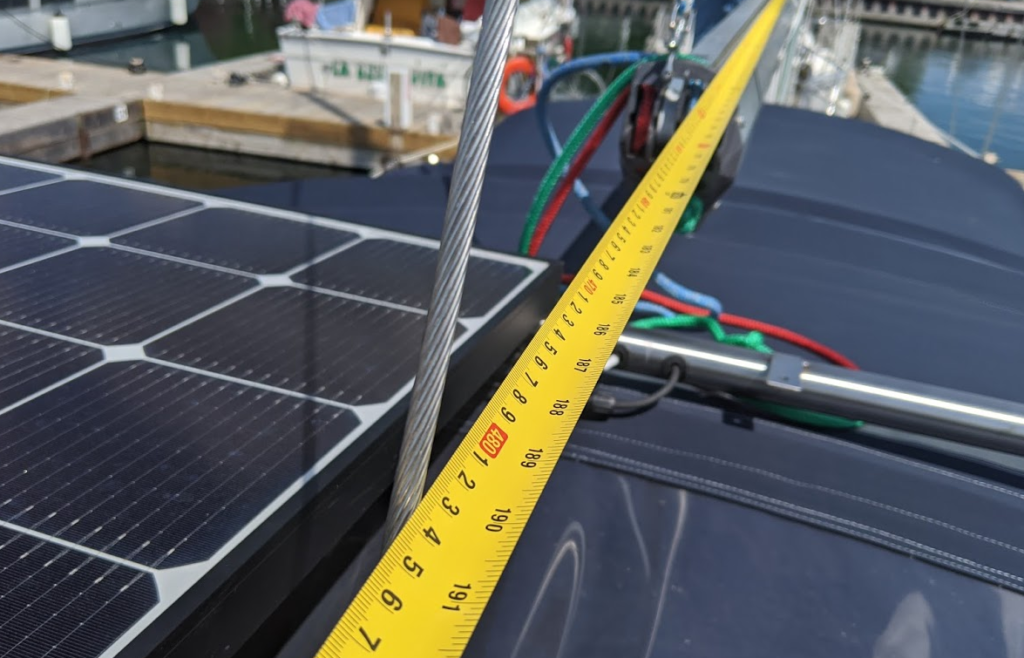
Mainsail tack connections
These measurements were a bit confusing but did my best to try and document what this looks like on our gooseneck.
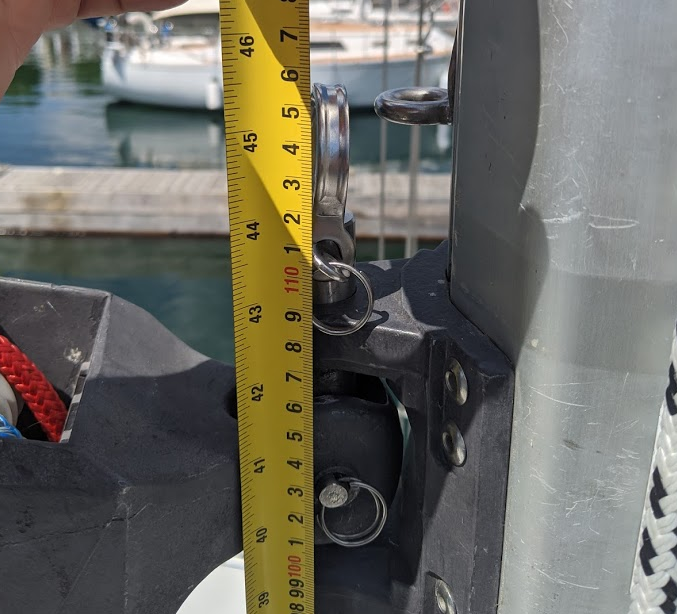
Distance from the top of the boom to the bearing point of the tack fitting is about 1″
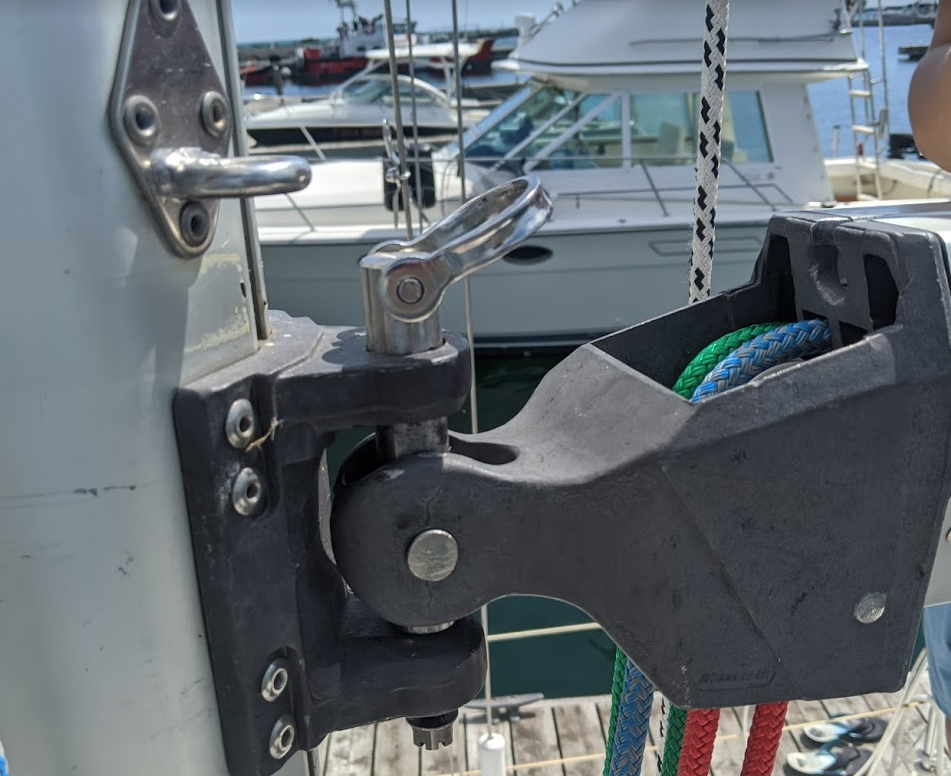
We don’t have any reef hooks, our reefing is done through the boom using a jiffy reef system.
At the top of our mast our head has a little bit of overlap to the backstay.
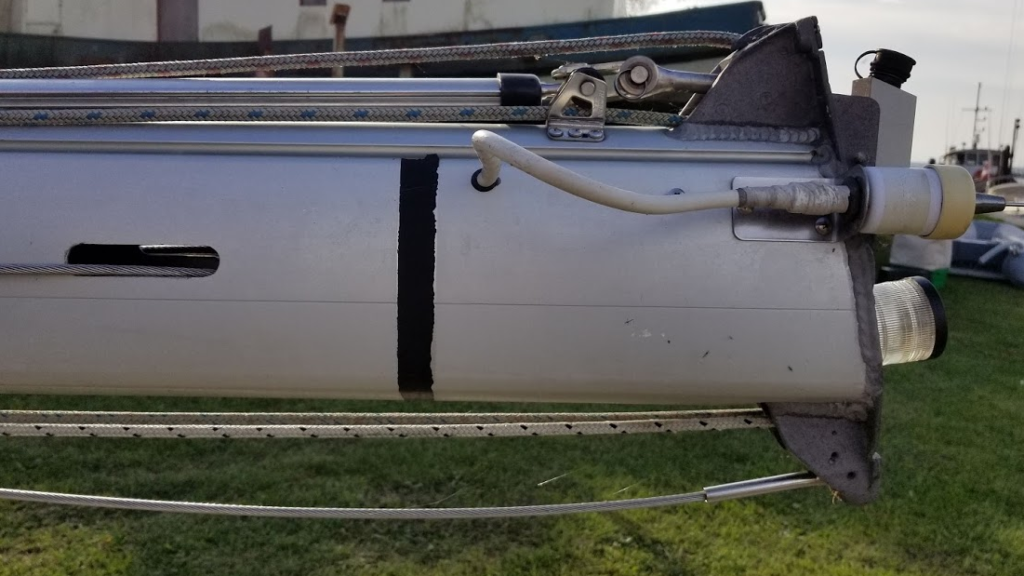
Boom track and mainsail clue slider
Our new sail will be loose footed but we need a new slider near the clue of our mainsail. Here’s our existing one.
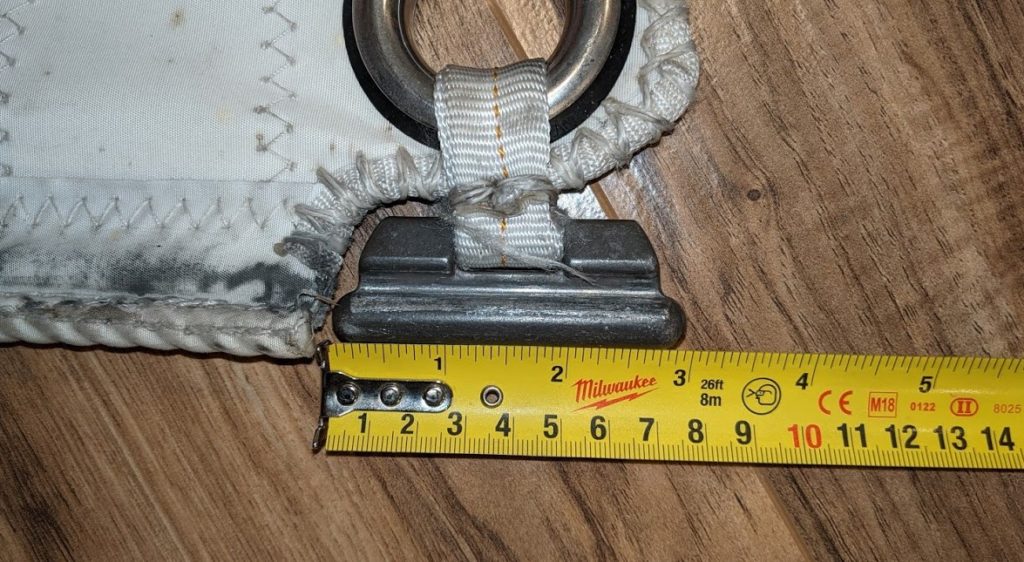
Length is just under 3″
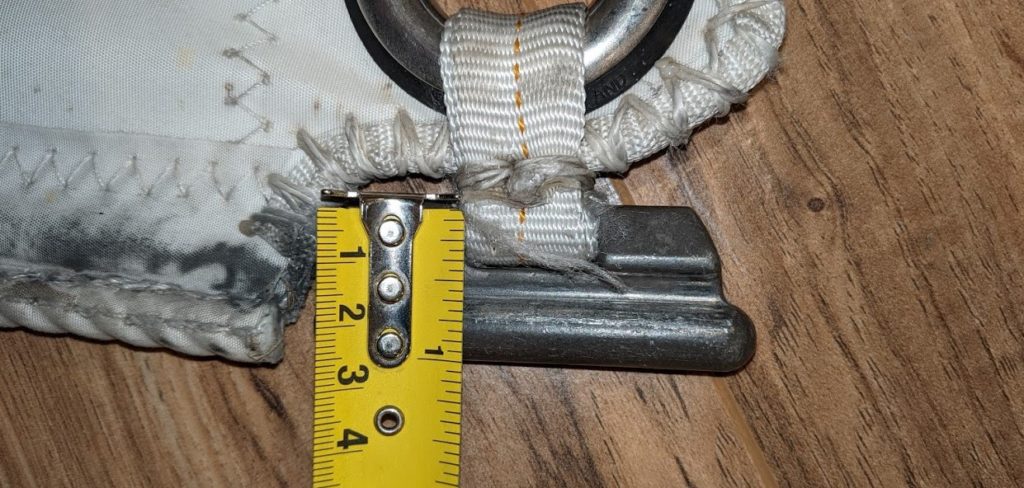
Total height is 1″
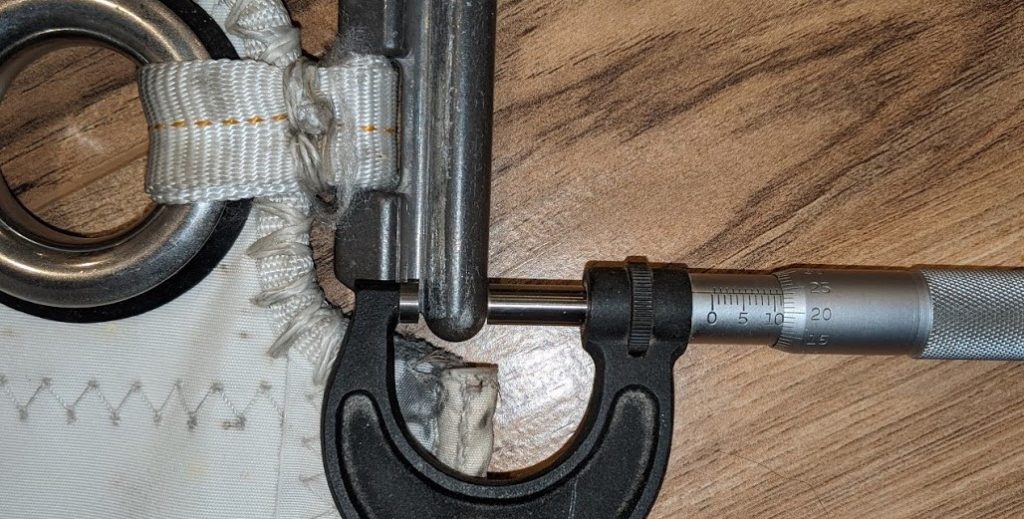
The slider is a cylinder with a diameter of 11.24mm.
We used the track measurement system from Tides Marine to determine the with and thickness of the track on the boom.
Track gap is 7mm (F). The thickness of the track is 3.5 mm (4).
Mast track and sliders
Our current sail uses flat slides, but we are converting over to use a new Tides Marine Track system to smooth out the raising and lowering of our sails. We find we are always struggling and fighting with our main halyard and look forward to having a smooth system that will allow us to quickly raise and drop the main.
Our current track and sliders look like this.
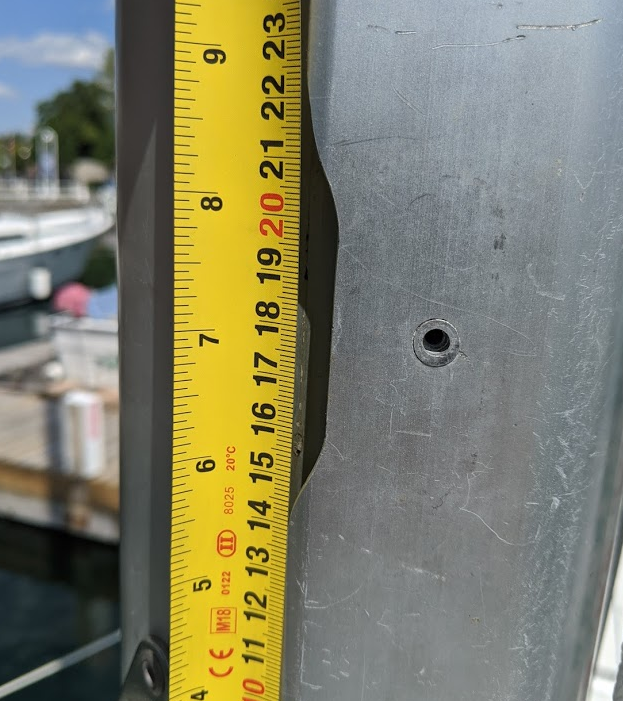
The current mast gate starts about 6″ above the boom.
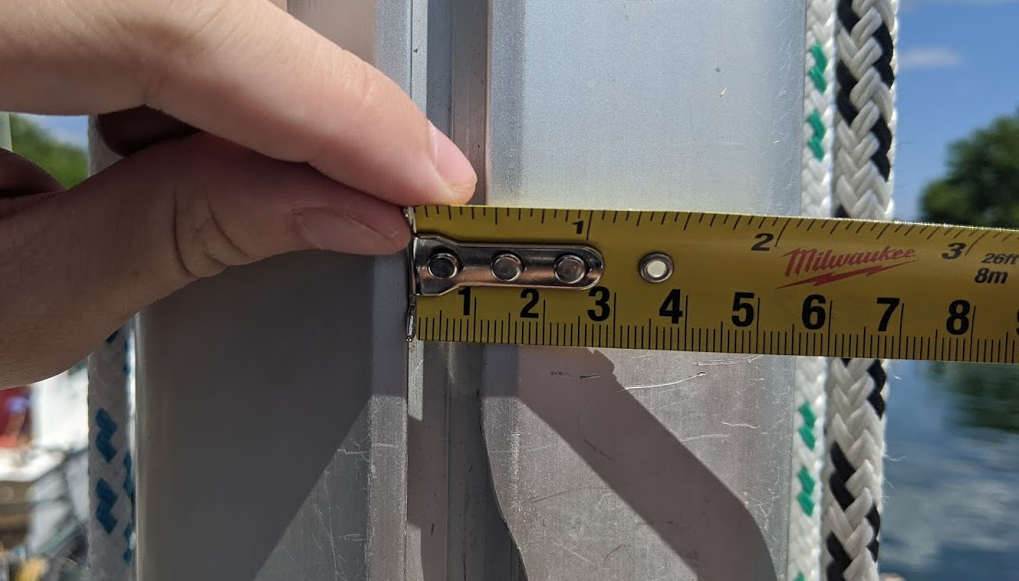
Track width is about 11mm.
Current slides have the following dimensions.
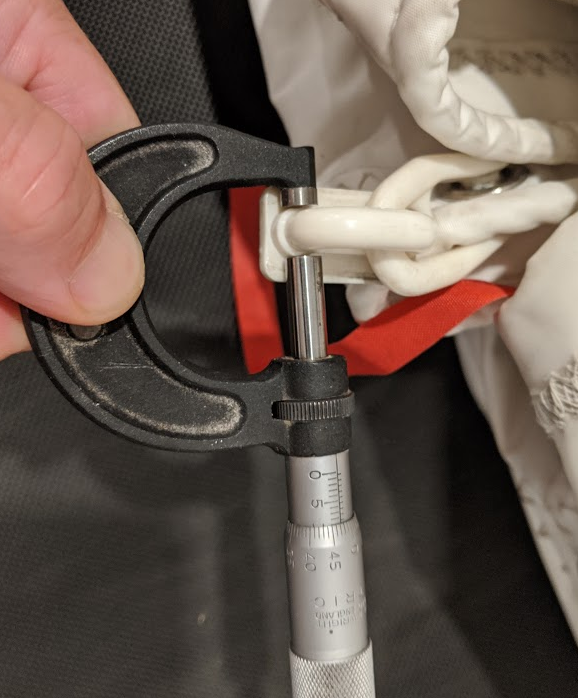
Slider waist almost 9mm
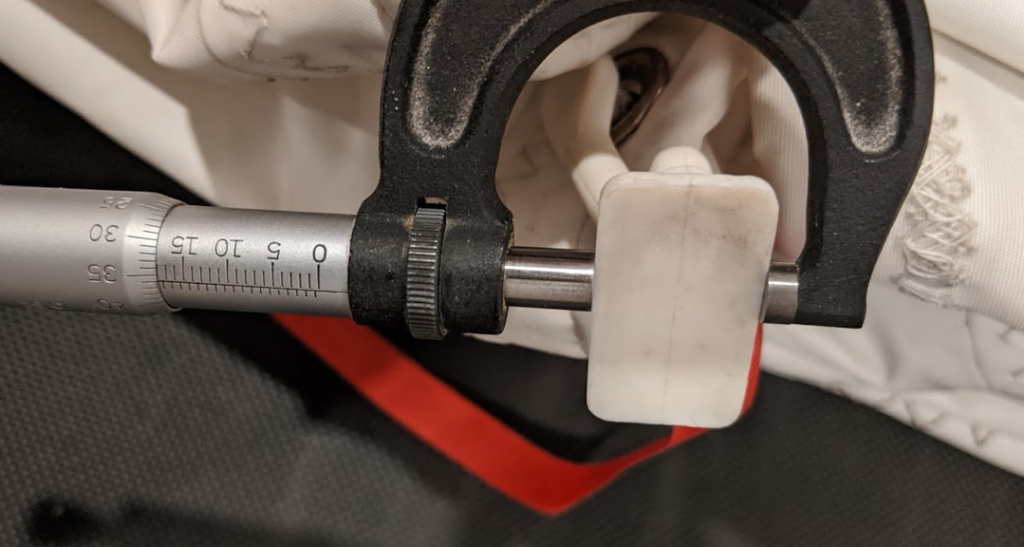
Slider width almost 18mm
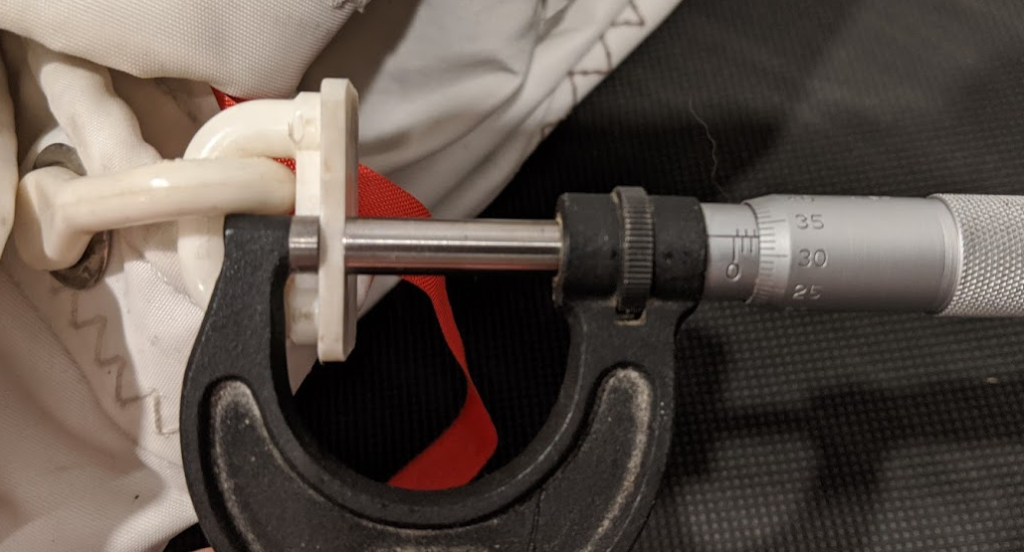
Thickness of the slider is almost 4mm.
Additional sail photos
Here are some additional photos of our boat with the existing sails.
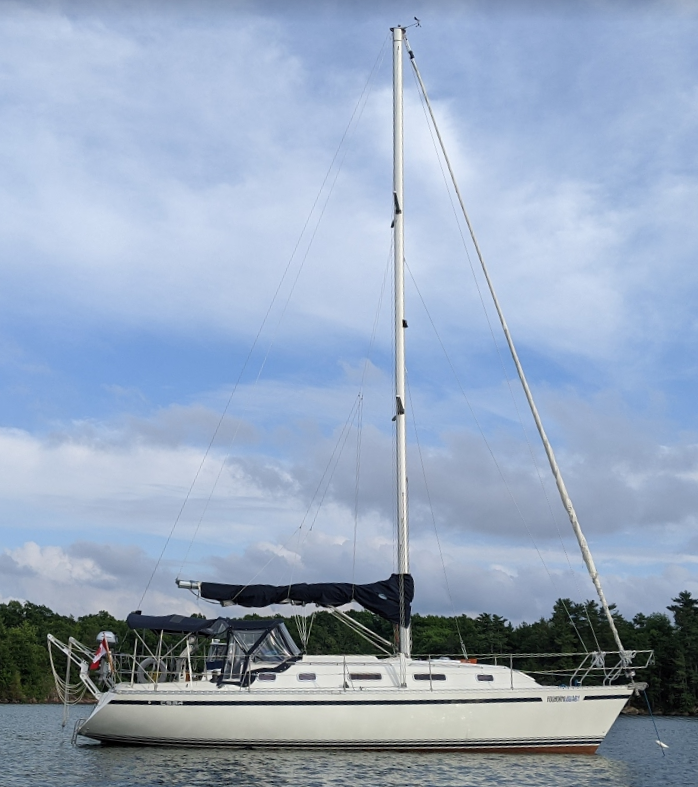
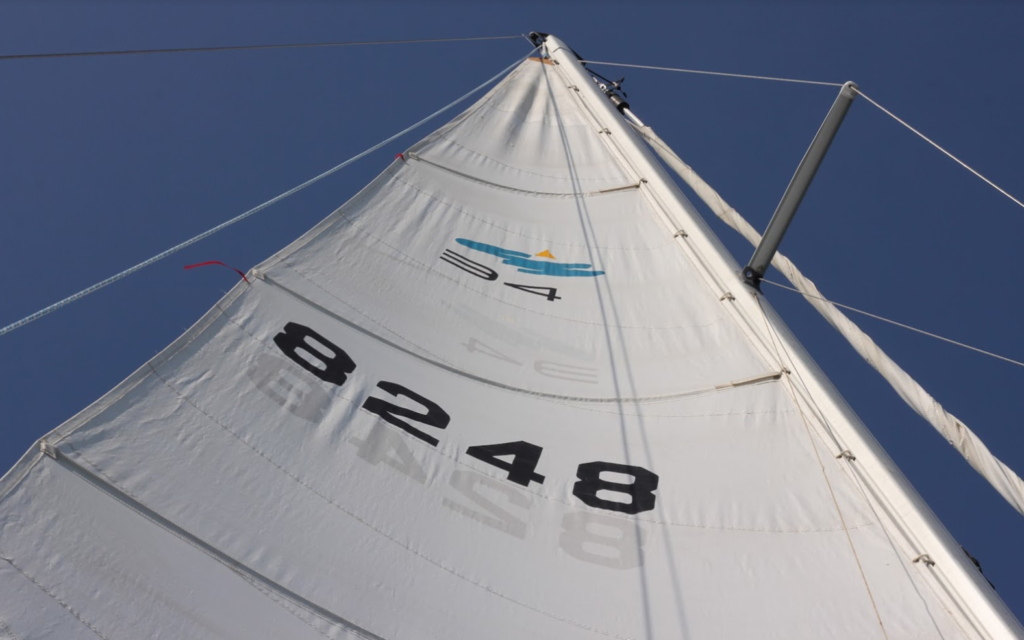
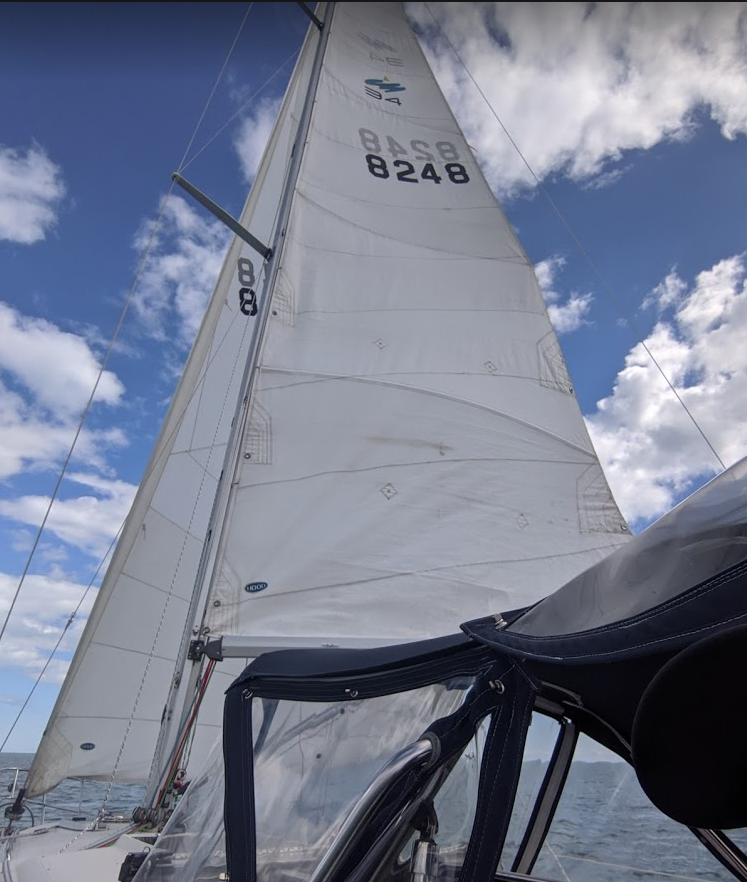
It was a light wind, not sure what was going on with our lower batten in that photo.
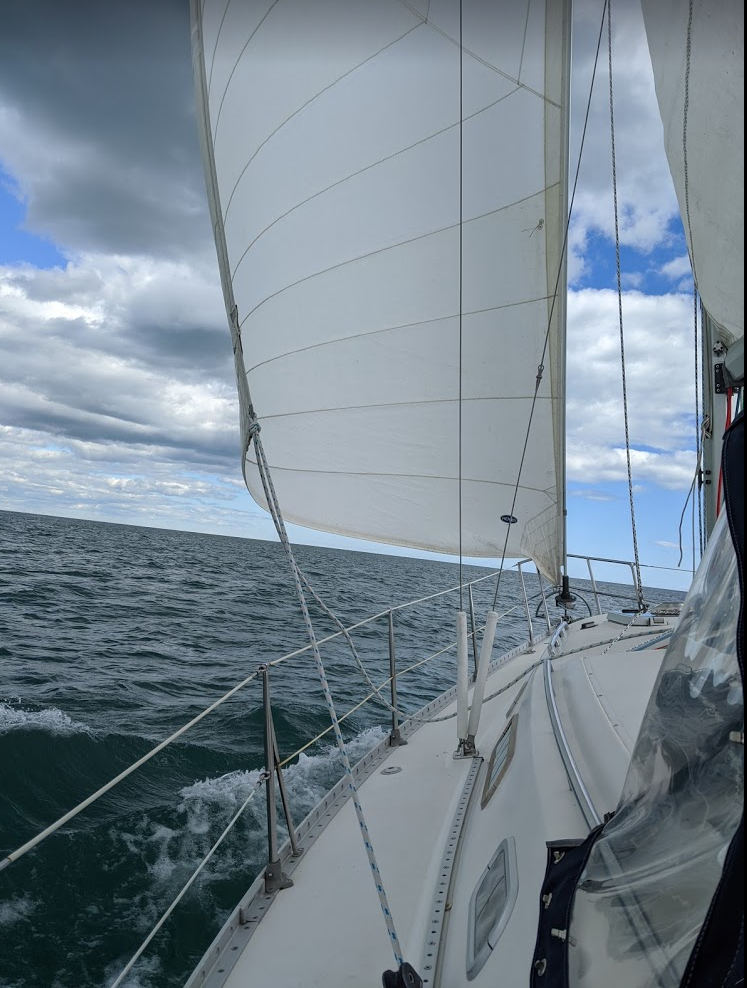
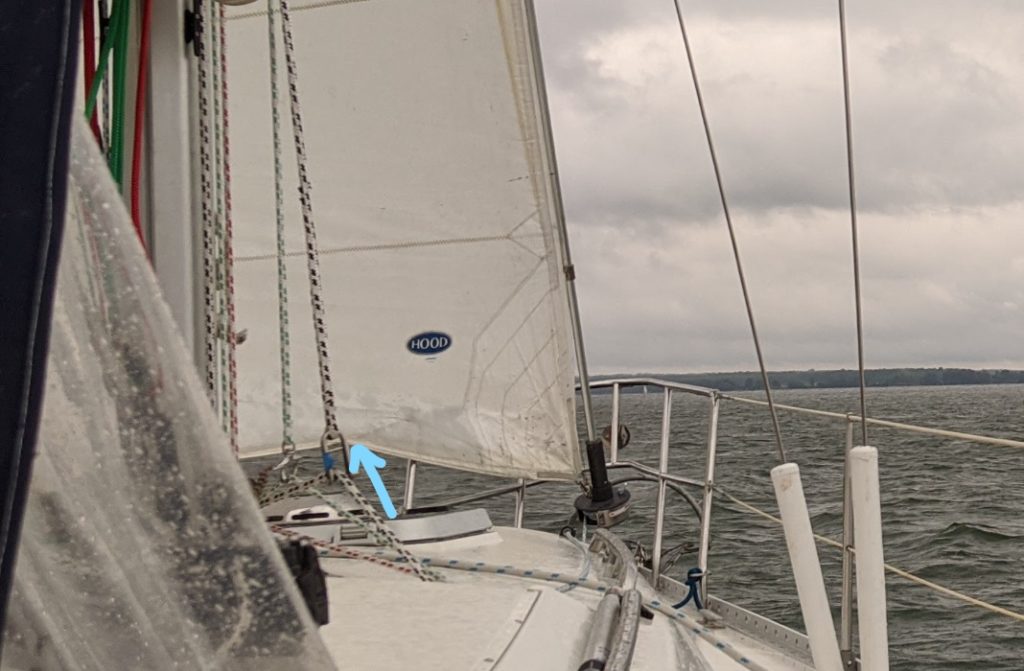
Our current sail sits on the pushpit and lifelines just a little bit. We wouldn’t mind giving up a little performance and raise it up a bit to to have less chafing.
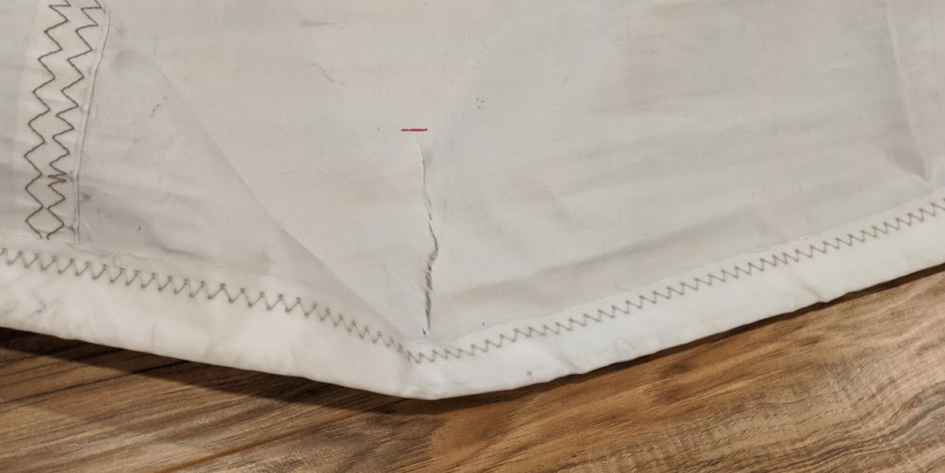

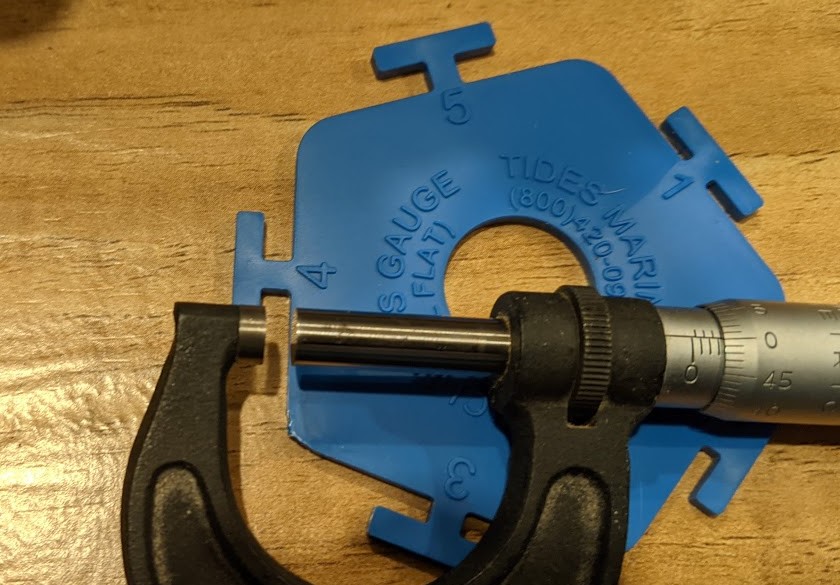

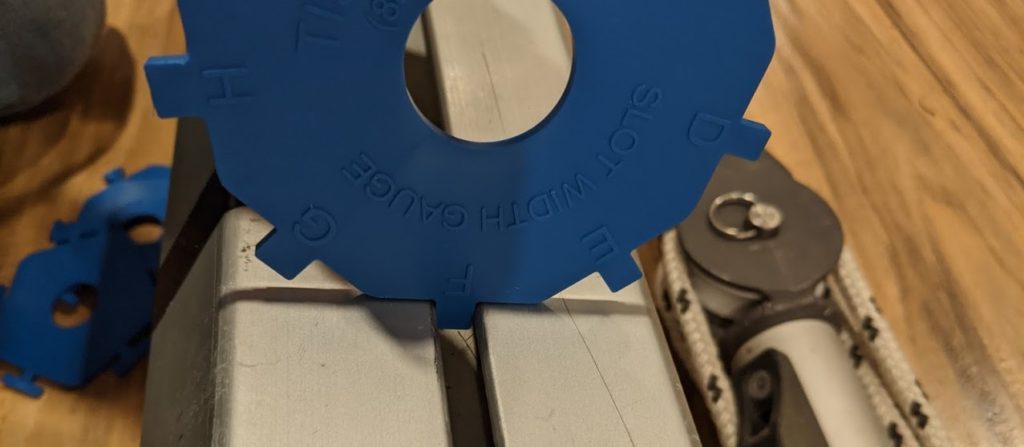
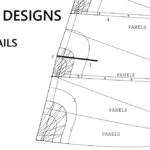
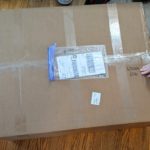

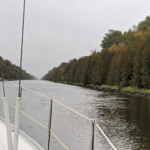

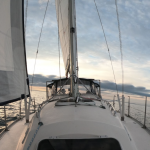
Leave a Reply